Argentina
Welcome to our Argentina Handy Travel Guide
The most beautiful places in Argentina
Argentina at a glance
Argentina at a glance
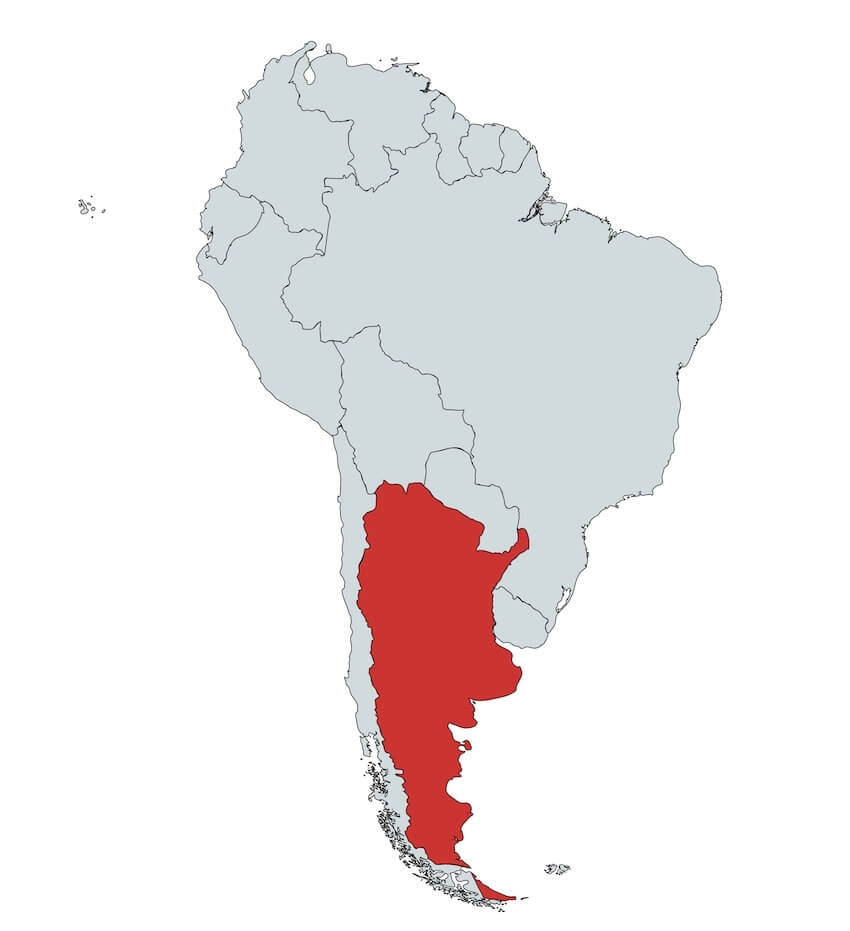
There aren’t many places on Earth with the stunning natural diversity of Argentina.
From lush rainforest in the northeast to cactus pitted desert in the northwest. From the wild and flat grazing land of The Pampas to the volcanoes and blue lakes of the Lake District. And from the glaciers and rugged mountains of southwestern Patagonia to the playground of southern right whales, orcas and elephant seals in Peninsula Valdes.
Indeed, there are many reasons to visit Argentina.
Add to that the country’s well-deserved reputation for world-class wine, superb food scene and thriving nightlife and you’ll come to understand why it’s one of our favourite destinations on the planet.
Here’s our rundown on five of the main regions and the most beautiful places in Argentina.
Northwest
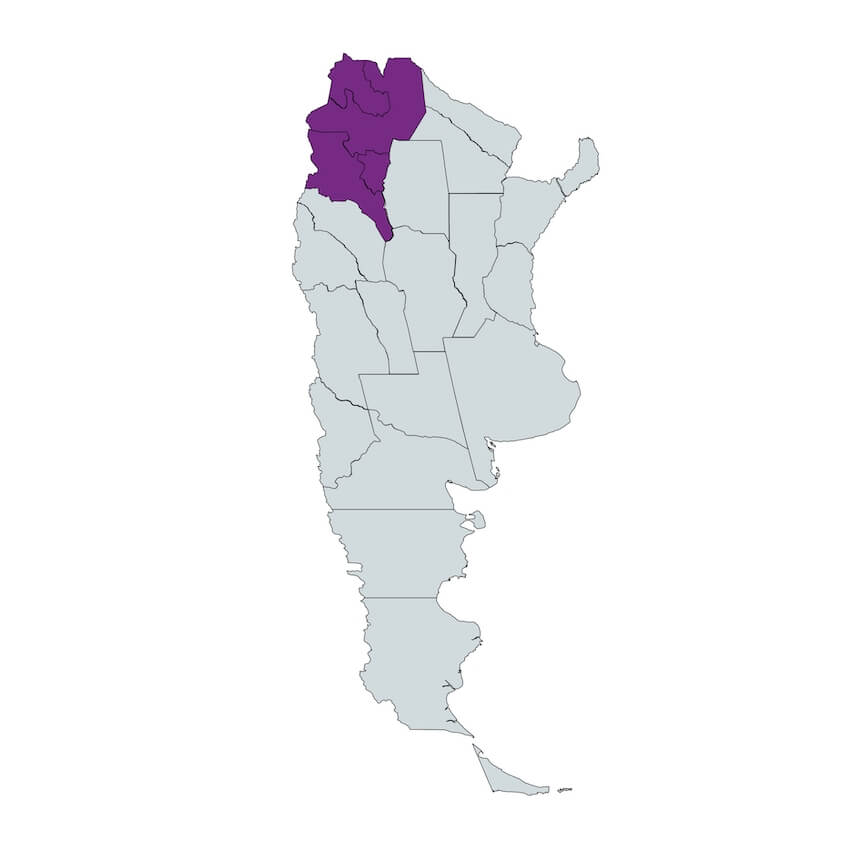
PROVINCES
Jujuy, Salta, Tucumán, Catamarca
KNOWN FOR…
Rugged desert landscapes dominated by red sand and mighty green cacti; high-altitude vineyards; Andean heritage
HIGHLIGHTS
Flanked by Chile to the west and Bolivia to the north, Argentina’s northwest is a region of fabulous desert scenery, colonial cities and tiny Andean villages. Best explored on two or four wheels, or by using the cities of Salta or Jujuy as a base.
In the far north, the Andean villages of Iruya, Humahuaca and Tildara are great bases to explore the amazing Quebrada de Humahuaca, essentially a gorge filled with rocks displaying the colours of the rainbow. Highlights include the Quebrada de las Señoritas, near the village of Uquía and the mindblowing Serrania de Hornocal, an expanse of mountainside with sharktooth-shaped colour patterns seemingly painted by a celestial graffiti artist.
Heading south, Salta is the colonial centre of the region, and where most tourists gather. The historic centre brims with Spanish architecture and has a lively food scene. Most famously, it’s the home of the humble empañada, a meat or vegetable-filled pasty. And it’s an obvious place to base yourself before exploring further afield by car or bus.
Beyond Salta, the open road beckons through vivid desert landscapes, passing through Cardones National Park and calling in at wild west towns such as Cachi along the legendary Ruta 40.
Cafayate is home to the country’s highest altitude vineyards. The main grape here is Torrontes, producing crisp, flowery whites at bargain prices. Spend a couple of nights here and work your way through the in-town bodegas. And don’t miss the wine-flavoured ice cream!
Close by, the Quebrada de Cafayate is a wild canyon landscape of reds and greens featuring dramatic rock formations.
To the west, the Puna is a shared high-altitude plateau with the Atacama Desert in Chile. Uber-remote and featuring salt flats, volcanoes and flocks of the ubiquitous flamingos, it’s a nature-lover’s paradise.
And, towards the Chilean border in western Catamarca, the town of Fiambalá is another fabulous detour from Ruta 40. Including the Termas de Fiambalá, a series of thermal springs that cascade down the mountainside.
REGIONAL FOOD
To whet your appetite, here’s an article on the most popular food in northwest Argentina.
WHEN TO GO
It may be dominated by desert but northwest Argentina can get pretty wet during January and February. That’s not to say it can’t be explored during those months (like we did) but when heavy rain arrives, some of the roads can become impassable.
The shoulder seasons (March/April/May and September/October) offer the best options for clear, dry weather and warm temperatures. However, although the nights during the winter months (June through August) can be cold, they are also the driest months of the year.
HOW TO GET THERE
There are no direct international flights to Salta. However, there are plenty of budget internal flights from Buenos Aires.
There are three land border crossings from Bolivia. The main one is at La Quiaca, north of Humahuaca. From there a connecting bus will take you to Salta.
From Chile, the main route for travellers is from San Pedro de Atacama. from where a direct bus can be taken. Or – as we did – rent a car or campervan.
Buses in Argentina are generally very comfortable and efficient. However, the sheer distances involved can mean lengthy journeys. For instance, it takes some 20 hours from Buenos Aires to Salta.
ROAD TRIPS
The northwest is a prime region for taking a road trip. And especially in a camper van.
We did exactly that as part of a longer road trip throughout the length of both Chile and Argentina. Based on our experience, here are a couple of suggested routes from Salta (where you can hire your car or camper) that will take just a few days.
North
Purmamarca & Cerro de los Siete Colores – Tildara – Uquia & Quebrada de las Señoritas – Humahuaca & Serrania de Hornacal – Uruya
South
Parque Nacional Los Cardones – Cachi – Cafayate – Quebrada de Cafayate
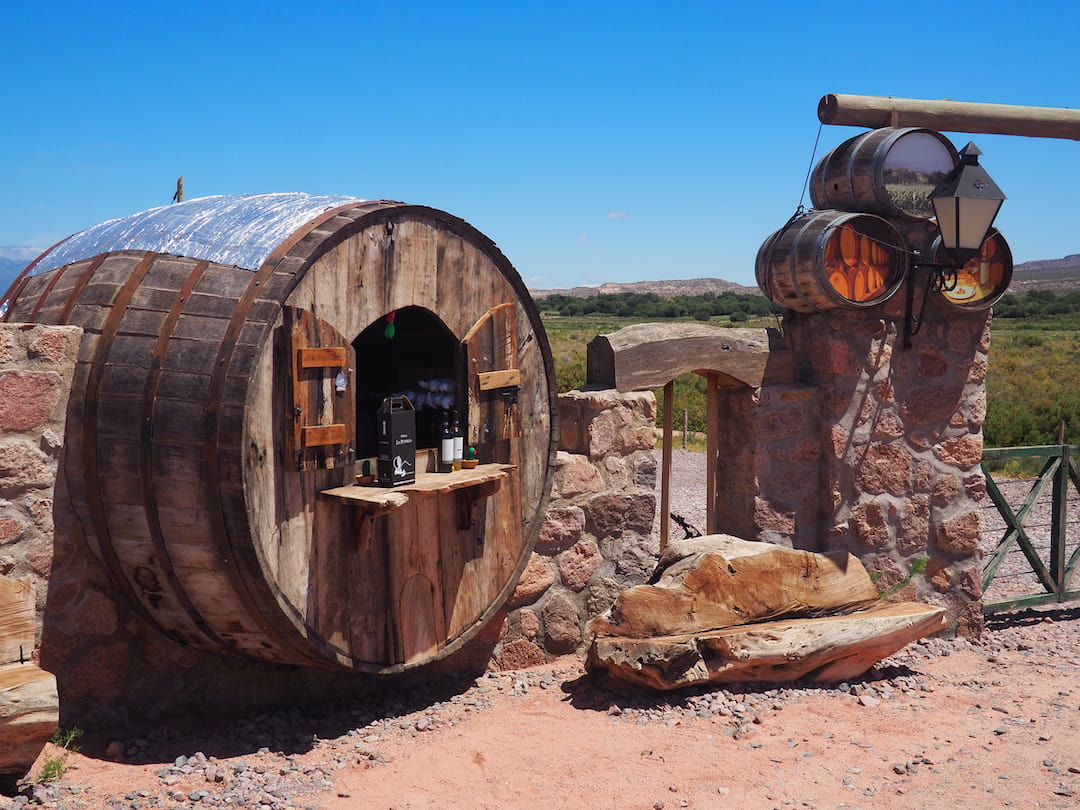
One of the numerous Cafayate bodegas
OUR BLOG POSTS FROM THE REGION
Mesopotamia
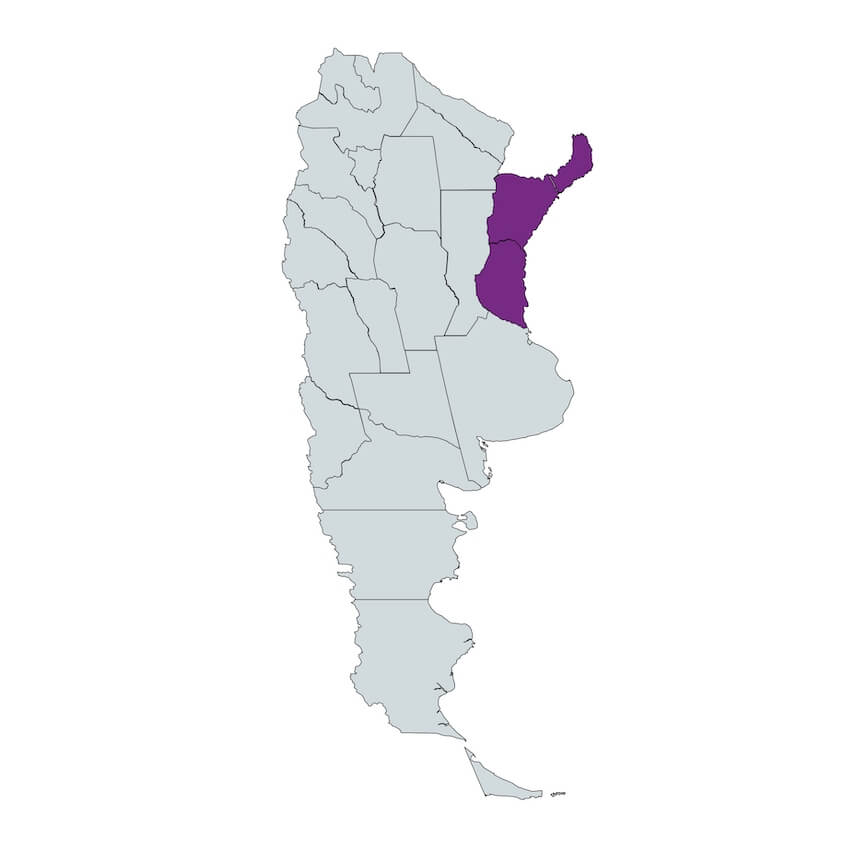
PROVINCES
Misiones, Entre Ríos, Corrientes
KNOWN FOR…
Mammoth waterfalls; wetlands; rainforest
HIGHLIGHTS
Mesopotamia is situated in Argentina’s far northeast and culminates in a narrow stretch of land sandwiched between Brazil and Paraguay.
The big draw is the simply staggering experience of witnessing Iguazu Falls. A series of 275 waterfalls set amongst sub-tropical rainforest, they’re the largest system in the world. And they’re recognised as one of the New Seven Wonders Of The Natural World.
Easily accessible from the nearby town of Puerto Iguazu, they should, if possible, be combined with a day trip to the Brazilian side of the falls for a different perspective. But, for sheer thunderous excitement, the close-up view of the Garganta del Diablo (Devil’s Throat) is an experience that will live long in our memory.
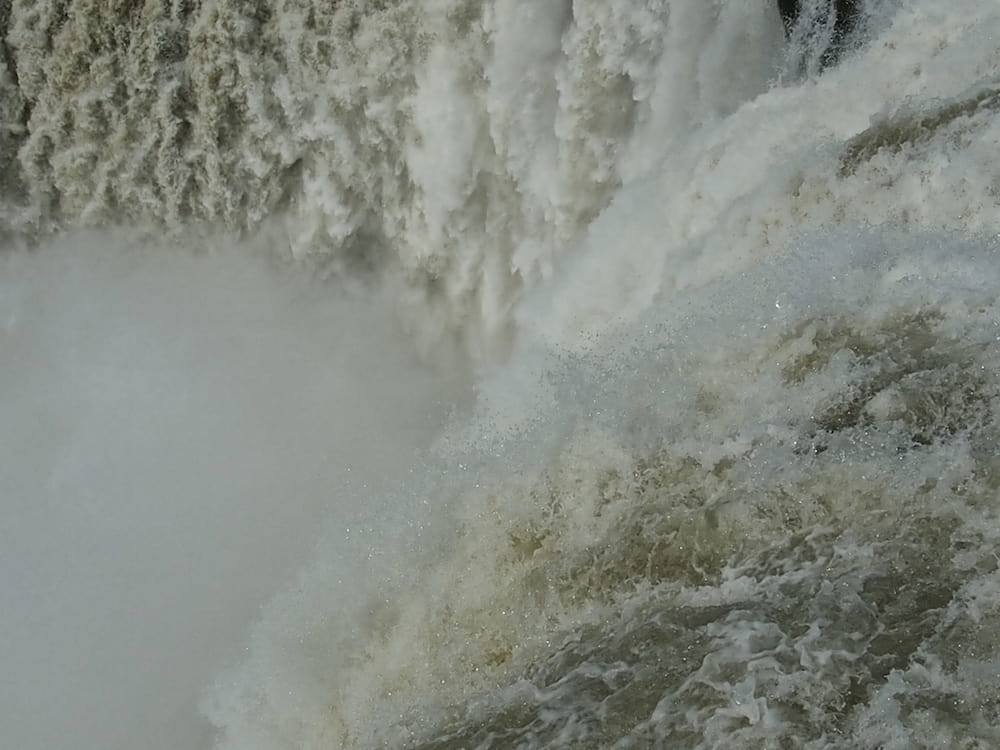
Looking down into the Devil’s Throat, Iguazu Falls
However, once they’ve seen the falls, most tourists simply fly back to Buenos Aires. But the region now also offers Iberá National Park. It’s a 700,000 hectare wildlife reserve combining wetlands and savannah. Still in its infancy (it only opened in 2018), it’s home to caimans, marsh deer, jaguars, howler monkeys and a whole host of bird species.
WHEN TO GO
Iguazu Falls can be visited throughout the year but you might want to avoid the domestic holiday periods (January, February, July, Easter) as the crowds will arrive en masse.
Typically the best months for the weather (not too hot and less rain) are March to May (except Easter) and September through October. And if you can visit during a weekday you can avoid the weekend crowds.
Similarly, the spring and autumn seasons are the best times to visit the Ibera Wetlands. Temperatures and humidity are lower than during the height of summer. And, although the spring months (September to November) can bring plenty of rain, the wetlands are at their most colourful.
HOW TO GET THERE
You can travel from Buenos Aires to Puerto Iguazu on one of the many daily flights. The nearest airports to Iberá National Park are in Resistencia and Corrientes. From there, unless you hire your own car you might want to consider booking a tour (also available in Concepcion, on the outskirts of the park).
OUR BLOG POSTS FROM THE REGION
Cuyo
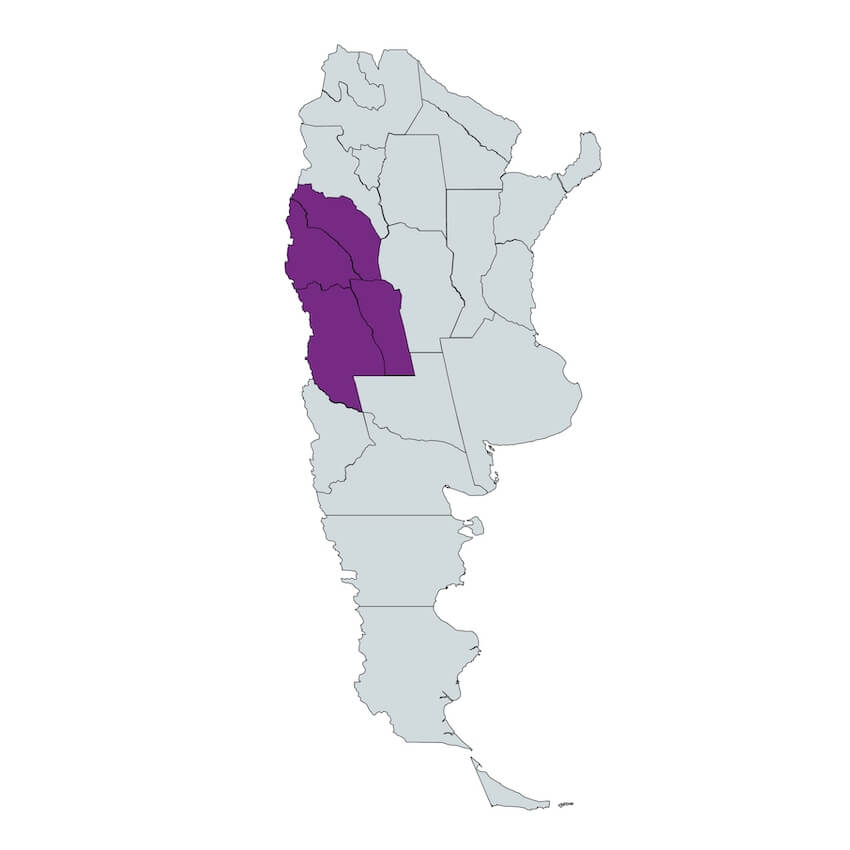 PROVINCES
PROVINCES
San Juan, La Rioja, Mendoza, San Luis
KNOWN FOR
Malbec wines; dinosaur fossils; South America’s highest mountains
HIGHLIGHTS
This part of central Argentina hugs the Andes mountains to the west and borders The Pampas to the east.
Running north to south, Ruta 40 (Argentina’s iconic road that hugs the Andes mountains) passes through or nearby most of the attractions.
In the north, Parque Nacional Talampaya is a UNESCO World Heritage Site where dinosaurs once roamed amongst the incredible red sandstone cliffs. Nowadays you’re more likely to see condors, guancos and foxes.
However, fossil hunters will be better rewarded in nearby Parque Provincial Ischigualasto, another otherworldly landscape of twisted rocks, blue skies and desert.
Road trippers can take a detour from the Ruta 40 near Ischigualasto and head towards Barreal for spectacular views of the high Andes. And for the opportunity to wild camp in The Valley Of Seven Colours.
Parque Nacional El Leoncito is a wild park filled with multi-coloured rocks. And comes with warning signs giving advice on how to ward off any pumas that might amble by.
The high road over the Andes to Santiago in Chile is the access point for the southern hemisphere’s highest mountain, Aconcagua (6,961 metres / 22,837 feet)
The main attraction for most visitors to the region is Mendoza. As a city in the foothills of the Andes with a fabulous climate, it’s appealing enough. But it’s also a paradise for foodies and wine lovers. As the home of Argentina’s world-class Malbec wines, there are vineyard tours galore. And often with tasting menus to pair with locally sourced food.
Indeed, if you’re happy to plan your vineyard tours independently, we’ve written an article on how we did just that.
Elsewhere in Mendoza province, Argentina’s natural splendour is once again on display in the Cañon del Atuel. And, further south in La Payunia, a nature reserve that features volcanoes and a moon-like landscape.
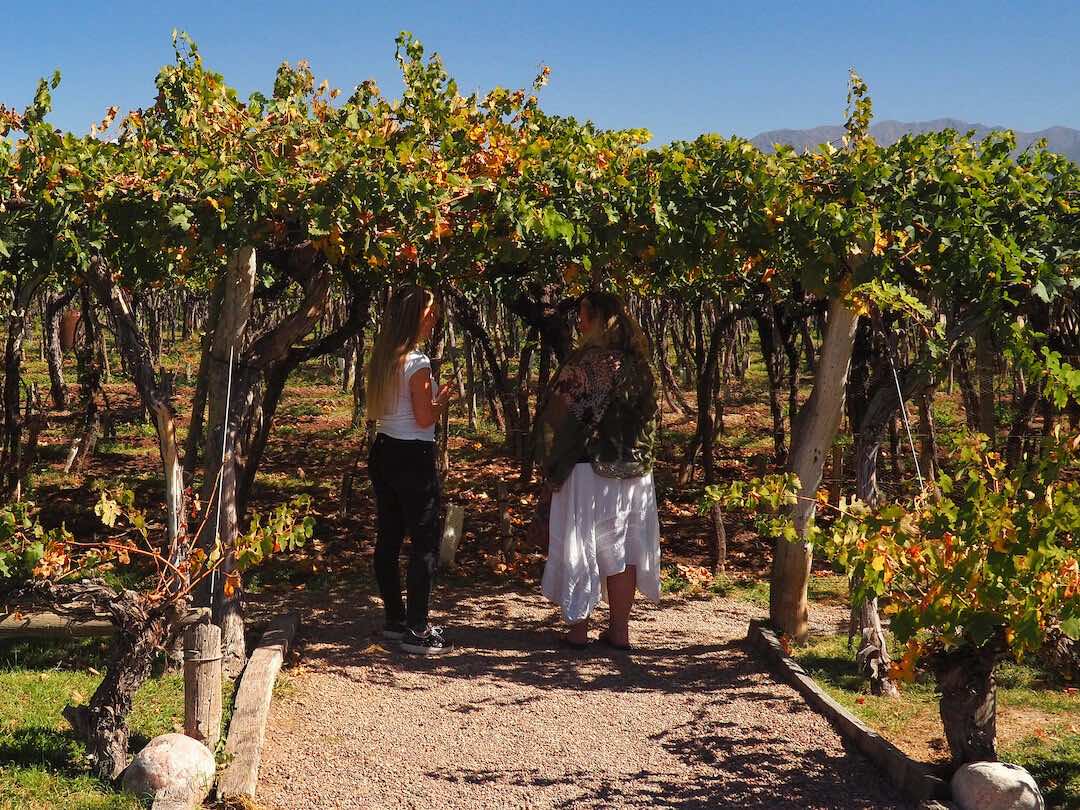
Just one of the three private vineyard tours we had in Mendoza
WHEN TO GO
October through April is generally considered to be the best time to visit Mendoza. The vineyards are in full swing and the weather is warm. the spring flowers of October/November and the autumn colours of March/April contrast fabulously with the clear blue skies and white peaks of the Andes mountains.
HOW TO GET THERE
The only direct international flights to Mendoza are from Chile (Santiago) and Brazil. Otherwise, you’d need to connect through Buenos Aires, from where there are several flights per day.
Buses also ply the spectacular route over the Andes from Santiago.
OUR BLOG POSTS FROM THE REGION
Pampas
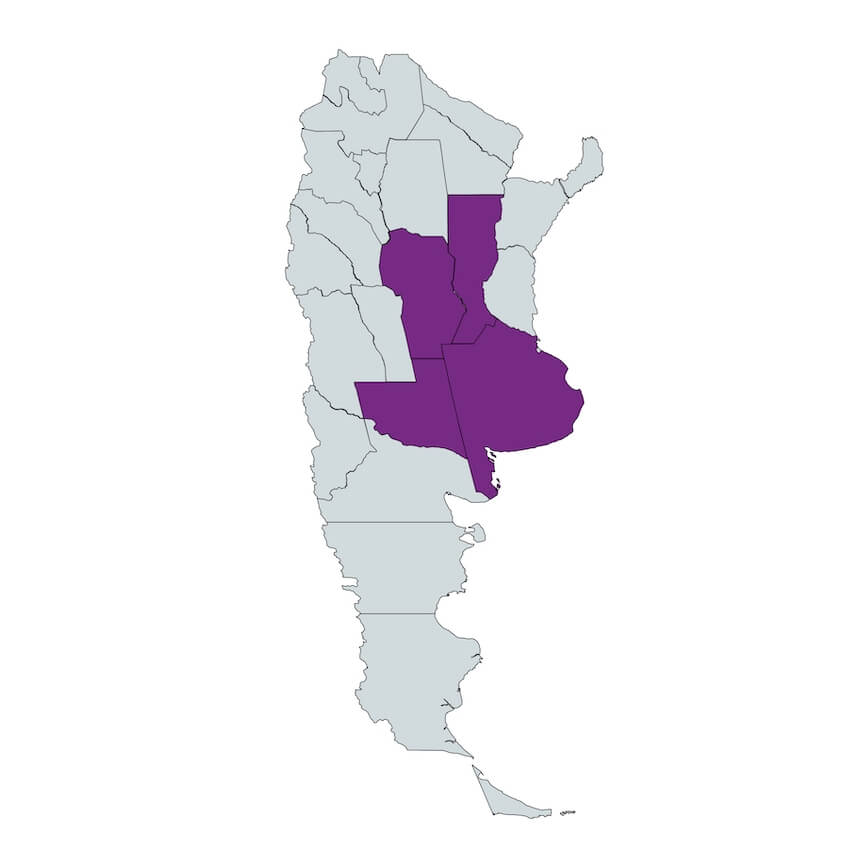 PROVINCES
PROVINCES
Córdoba, Santa Fe, La Pampa, Buenos Aires
KNOWN FOR
Huge plains of grassland; fields of cattle, wheat and soya; gauchos (Argentinian cowboys); Buenos Aires and Cordoba
HIGHLIGHTS
Contrasting sharply with the dramatic Andes-dominated landscape to the west, the endlessly flat plains of The Pampas (meaning “flat surface” in the indigenous Quechua language) cover 295,000 square miles and stretch to the Atlantic coast.
Under the protection of the Andes mountain range, the plains to the west are typically mile-upon-mile of barren desert and salt flats. Further east, fields of wheat, corn, soya and grazing cattle dominate, centred around traditional estancias (ranches)..
It’s here that the legendary image of the gaucho was established – the extravagantly dressed 19th Century cowboys of The Pampas.
Of course, nowadays tourists can book accommodation at an estancia and learn how to ride a horse like a gaucho. A good place to start is in San Antonio de Areco. We haven’t done that yet but it’s definitely on our bucket list.
Tandil is another good base, too. Especially if you want to try out some of the region’s best gourmet food.
Buenos Aires is most likely to be the main entry point for most international visitors. The home of tango, it also boasts fantastic European-inspired architecture and great food. Not to mention the opportunity to watch one of its famous football teams – including River Plate, Velez Sarsfield and Boca Juniors (the home of one Diego Maradona).
Less visited is Argentina’s second city, Cordoba. It too has a historic core of colonial buildings from the 16th Century and a thriving nightlife, courtesy of its strong university culture.

WHEN TO GO
The spring (September to November) and autumn (April to June) seasons are the best time to visit both Buenos aires and the Pampas in general. The temperatures are much more comfortable than the hot and humid summer months, and the crowds will be much thinner.
HOW TO GET THERE
Buenos Aires has a major international airport, from where internal flights criss-cross the rest of the country.
Patagonia
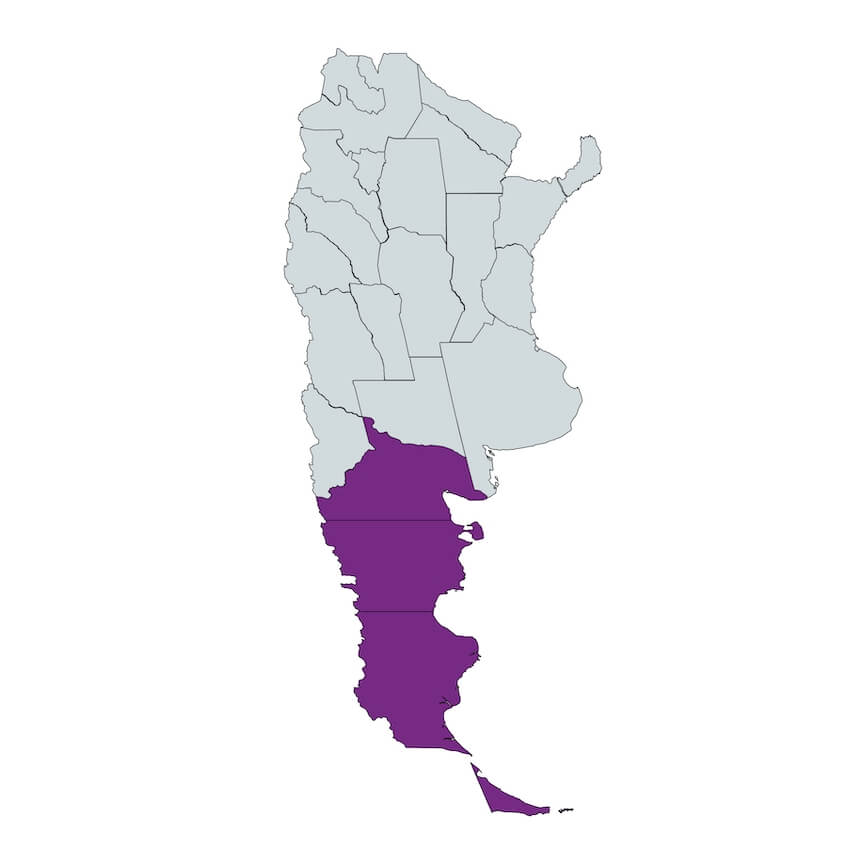 PROVINCES
PROVINCES
Rio Negro, Neuquén, Chubut, Santa Cruz, Tierra del Fuego
KNOWN FOR
Jagged mountains; glaciers; wildlife; backpacking
HIGHLIGHTS
There’s nowhere quite like Patagonia, a region of staggering beauty shared between Argentina and Chile. In between, the Andes mountain range draws a line between two distinct landscapes.
Whereas much of Chilean Patagonia features glacial fiords and lush temperate rainforest, the Argentinian side is once again dominated by desert and grassland. Although, in a region so large there are exceptions.
To get the best out of it you’ll undoubtedly benefit from hiring a car. Or, better still, a camper van. Although internal flights between some of the major destinations are possible.
In the north, the lake district around Bariloche and Nahuel Huapi National Park is a hiker’s paradise.
Heading south, the Cueva de las Manos (Cave of the Hands) is a UNESCO Worl Heritage Site featuring ancient cave art. Specifically, hundreds of human hands painted on the cave walls like some sort of prehistoric stencilled mural. And it’s surrounded by a canyon landscape of incredible beauty.
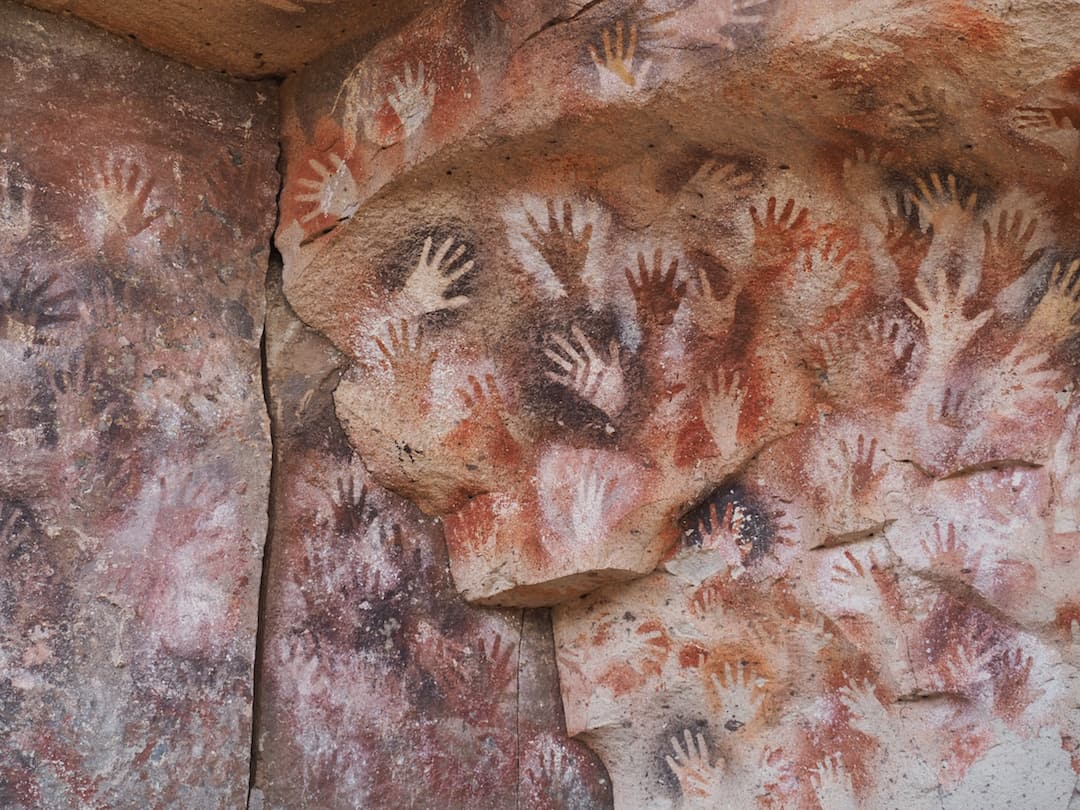
Cueva de las Manos
El Chalten is home to one of the most dramatic settings in South America. Situated at the northern end of Los Glaciares National Park, the imposing jagged peaks of Mount Fitz Roy and Cerro Torre entice hikers and climbers from all over the world. Even if you’re not a serious hiker, the day hikes on offer are probably some of the best you’ll find anywhere. And the laid-back town has plenty of bars and restaurants to help with your recuperation.
At the southern end of the park, Perito Moreno Glacier is one of the most accessible major glaciers in the world. You can get close to it by taking a boat tour. Or simply observe it from a superb platform and boardwalk. You can even hike on it with an organised tour from nearby El Calafate.
Whatever you do, don’t miss the chance to see a slab of ice the size of a three-story house suddenly drop from a 70-metre wall into the lake below. It’s a jaw-dropping experience you won’t forget. And you needn’t feel you’re witnessing the negative effects of climate change as it’s all part of Perito Moreno’s normal cycle of advance and retreat (it’s one of the few glaciers in the world that isn’t in decline).
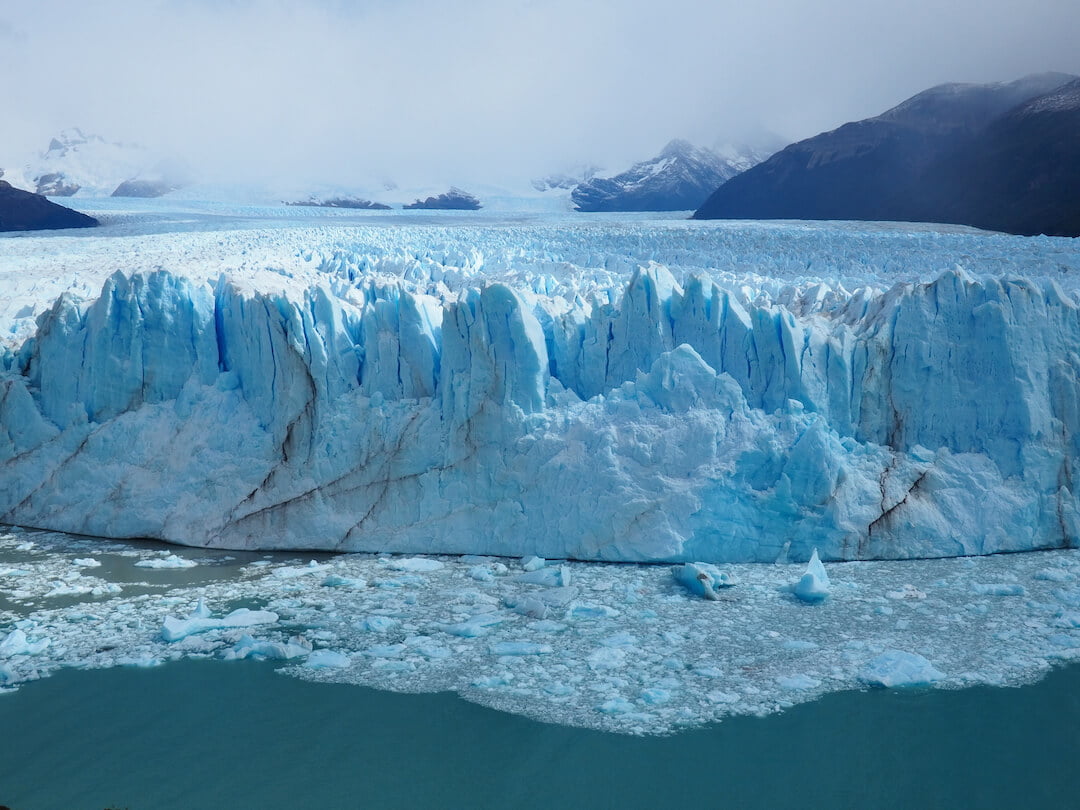
Perito Moreno Glacier
Over on The Atlantic coast, Tierra del Fuego National Park resides at the southernmost tip of South America. Home to volcanoes, glacial lakes, Ushuaia (the southernmost city in the world) and huge colonies of penguins, it’s remote and unique.
Meanwhile, further north, the Valdes Peninsula is one of the world’s best wildlife-watching destinations. Especially for southern right whales, orcas, elephant seals and sea lions.
WHEN TO GO
The main season for Los Glaciares National Park is December to February. Which naturally comes with the largest crowds. November and March can be good alternatives. But April to October is generally reserved for diehard fans of freezing cold weather.
The high season for Ushuaia is between October and March, even though it’s also the rainy season. Outside of those months, the temperatures plummet and travel becomes difficult, but not impossible. You might also want to avoid cruise ship docking days.
You can see plenty of wildlife in the Valdes Peninsula all year round. But, for the “big ticket” sightings of southern right whales, the best period is September to October. And, being the spring season, it’s also when most of the other species begin to breed, too.
HOW TO GET THERE
Patagonia’s main airports (domestic flights only) are Ushuiai (for Tierra del Fuego), Puerto Madryn (for the Valdes Peninsula), Bariloche (for the lake district) and El Calafate (for Perito Moreno Glacier and El Chalten).
It’s also possible to fly within Patagonia from El Calafate to Bariloche and Ushuaia.
ROAD TRIPS
The legendary Ruta 40 is undoubtedly one of the world’s best road trips and can be loosely followed from the lake district all the way down to Rio Gallegos.
With plenty of wild camping opportunities along the way you’ll need a camper van or a car and tent. and the temperatures can get pretty cold at night the further south you go. But if you have the time – and the inclination – it’s the stuff of road trip dreams!
OUR BLOG POSTS FROM THE REGION
El Chalten: The Jewel In Patagonia’s Crown
Our Top 5 MOST BEAUTIFUL PLACES in Argentina
With so many stunning places in Argentina to visit, coming up with a shortlist of our Top 5 most beautiful places of all took some debate. However, with the aid of several glasses of Torrentes, we finally came up with our definitive list.
And, in no particular order, they are:
PERITO MORENO GLACIER
We were quite simply awestruck at the scale and beauty of this wonder of nature. So much so that we took a tour to hike on part of it (with the aid of crampons, of course). The easiest way to see it, however, is by taking a stroll along the superb boardwalk complex facing it.
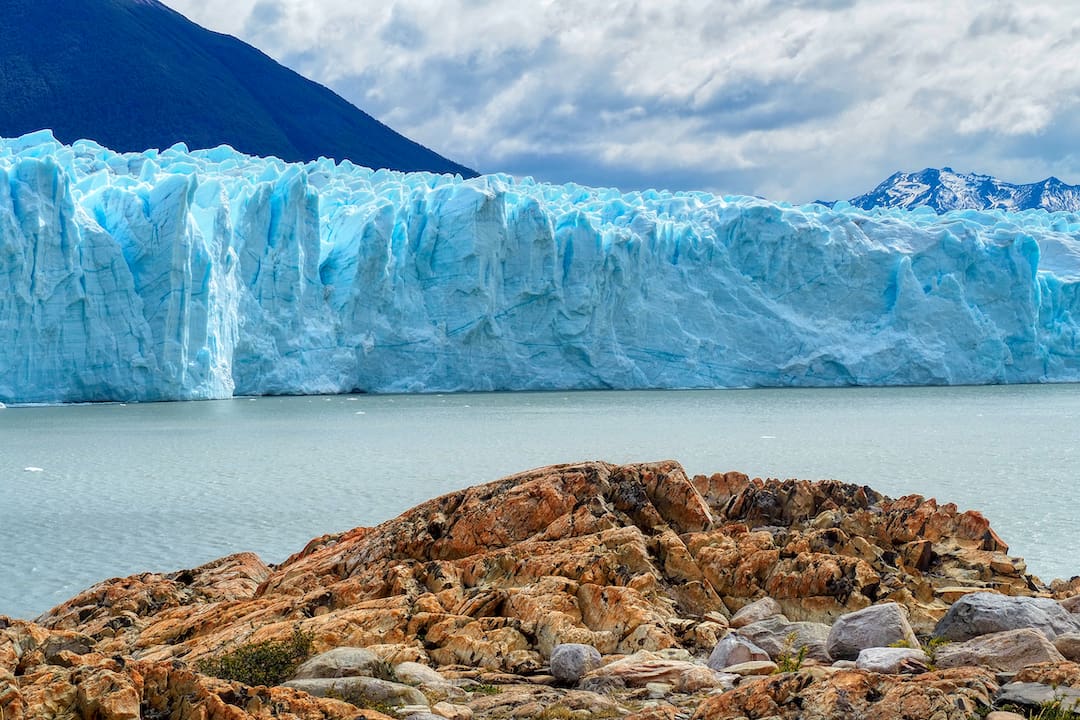
Perito Moreno Glacier
IGUAZU FALLS
From one wonder of nature to another. You can’t really appreciate the enormity of this series of waterfalls until you’re close enough to feel the constant spray on your face. Best appreciated from both the Argentinian AND Brazilian sides, the falls will literally take your breath away. And that’s before you jump in a speed boat for the ultimate close-up view!
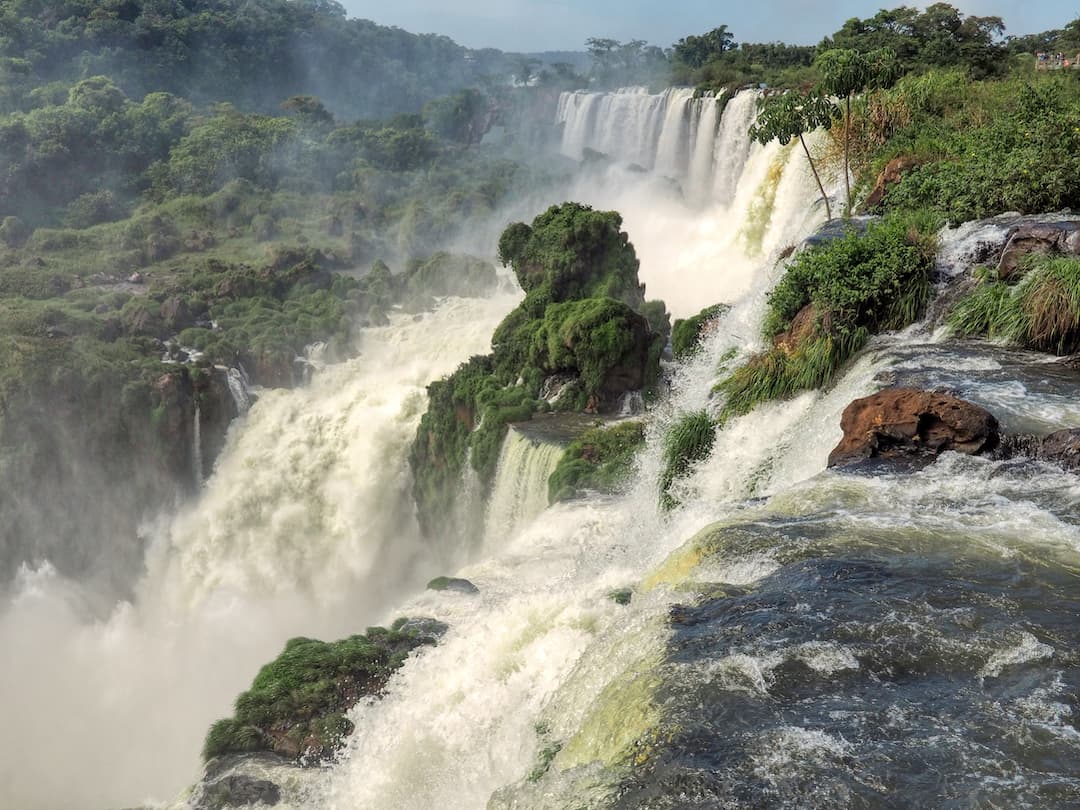
Iguazu Falls
CANON DEL ATUEL
A canyon with a gorgeous reservoir at its head, Canon Atuel is off the beaten track for most international visitors. But, if you’re renting a car or campervan in Mendoza, you should include this stunning place as part of your trip south along Ruta 40.
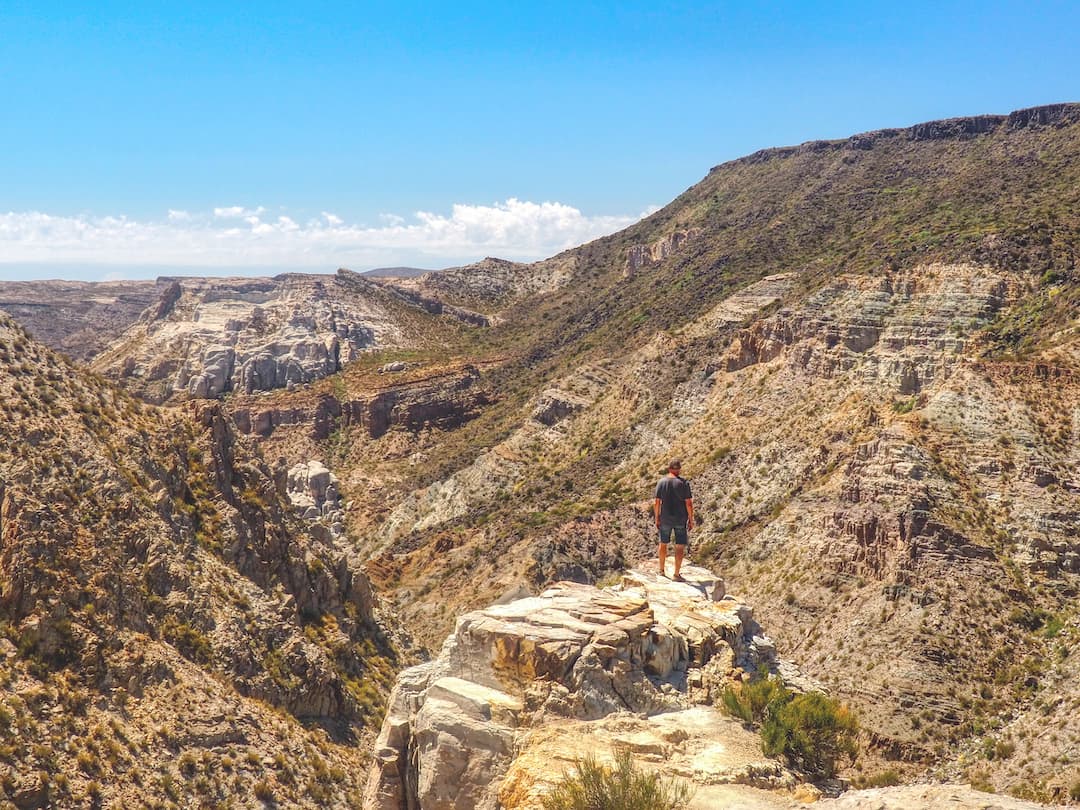
Canon del Atuel
MOUNT FITZ ROY
The jagged peaks of Mount Fitz Roy dominate the scenery around El Chalten. With its hanging glaciers, lakes and fantastic trails, it’s a hiker’s paradise. As long as the weather is clear enough to appreciate it! The day hike up to the glacial lake just beneath its triple towers is one of our South American highlights.
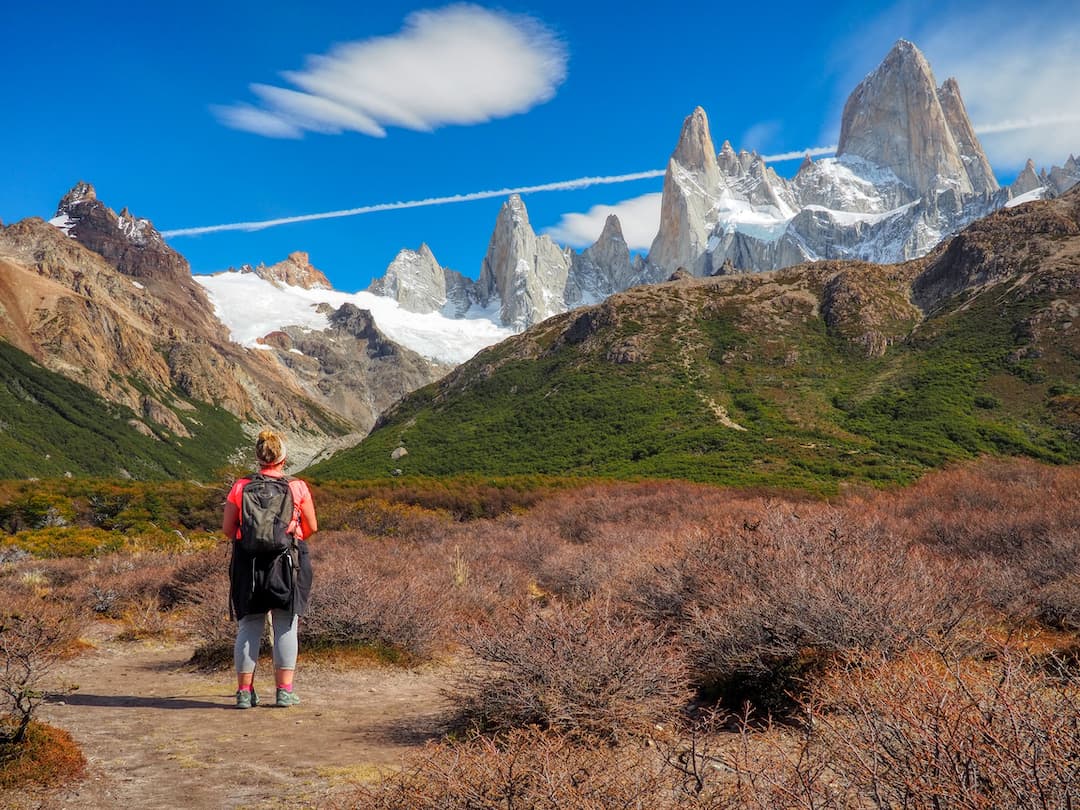
Hiking from El Chalten to Mount Fitz Roy
THE VALLEY OF SEVEN COLOURS
Another hidden gem, which can only be accessed with a 4WD vehicle. Close to Barreal, in the Cuyo region of Argentina, the landscape is a myriad of rainbow colours with a backdrop of the snow-capped peaks of the Higher Andes. We were lucky enough to stay here in our jeep and rooftop tent.
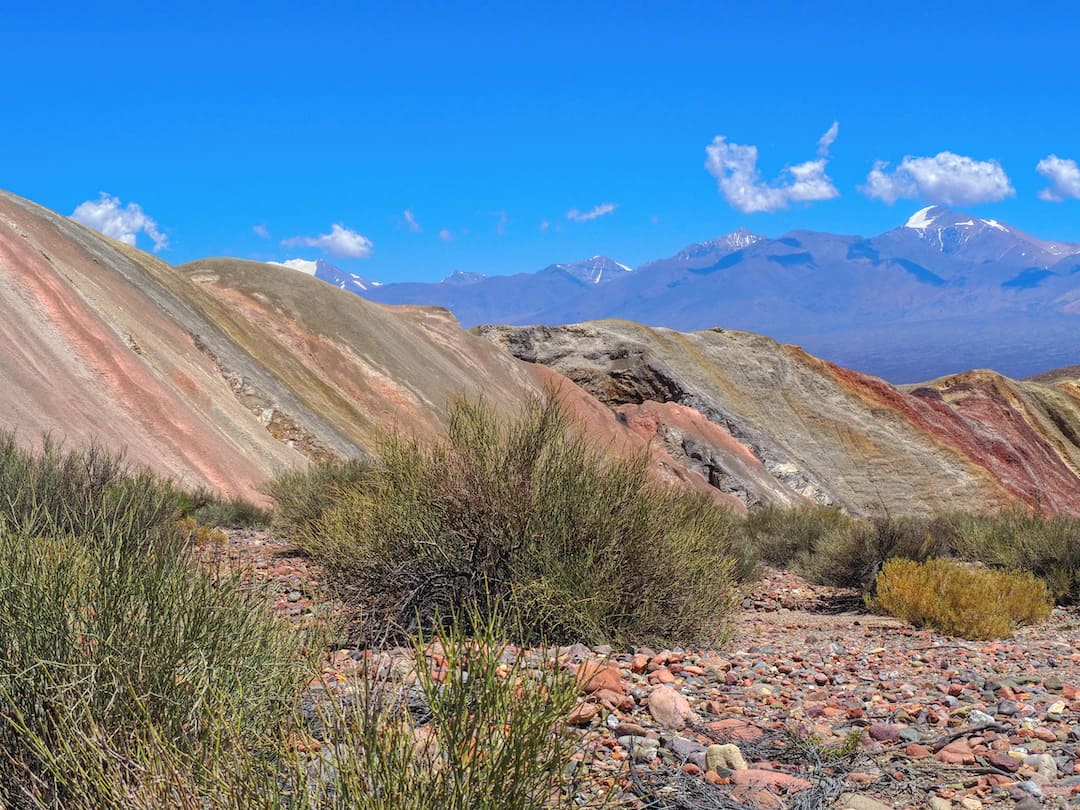
The Valley of Seven Colours
An Argentina Road Trip From Humahuaca To Mendoza
6 Sublime Wild Camping Spots In Argentina And Chile
How To Plan Your Own Mendoza Vineyards Tour
The Rainbow Mountains Of The Quebrada De Humahuaca
El Chalten: The Jewel In Patagonia’s Crown
The Prehistoric Rock Art Of Cueva De Las Manos
The Fabulous Perito Moreno Glacier – A Complete 2020 Guide
Iguazu Falls And How To Make The Most Of Your Visit
When is the BEST TIME TO VISIT ARGENTINA?
In a country of such size and diversity, it’s possible to find perfect weather and travel conditions somewhere throughout the year.
Generally speaking the further south you go, the more likely you’ll want to visit during the summer months between November and March. In the north, however, the spring and autumn seasons will generally offer a greater balance of fewer crowds, milder weather and better value for money.
Be aware that the Argentinian domestic holiday seasons run from mid-December to February and again at Easter.
Check out our “Argentina at a glance” section for more information on the best time to visit each region.
Do I need TRAVEL INSURANCE FOR ARGENTINA?
The simple answer is yes. Don’t try and take shortcuts with your budget by ignoring insurance. If something serious happens to you, the cost of emergency medical attention and repatriation could be excessive Especially if you’re in a remote location such as Patagonia.
You might consider the likes of flight cancellations or lost baggage to be risks you’re happy to take. But medical cover, personal liability and emergency assistance should be a given.
Ultimately the type of Argentina travel insurance you need will depend on your own individual circumstances. We can recommend two insurance providers.
Being UK-based we use TrueTraveller, who offer a range of products to cover holidaymakers, adventure travellers and backpackers.
For non-UK based travellers, we can recommend SafetyWing, who provide global travel medical insurance for nomads all over the world.
Do I need a TOURIST VISA to enter Argentina?
No – upon entry you’ll be granted permission to stay in the country for up to 90 days without a visa (subject to the discretion of the Immigration Officer).
What are the vaccination ENTRY REQUIREMENTS FOR ARGENTINA?
For the latest Argentina travel restrictions and health-related requirements, please check this free online tool, courtesy of SafetyWing.
Is Argentina SAFE TO VISIT?
Generally speaking, Argentina is a safe destination for holidaymakers and travellers, as long as sensible precautions are taken (such as not walking along unlit streets at night, accepting drinks from a stranger, or flashing expensive jewellery).
As in any major city, there are areas best avoided at night, such as La Boca in Buenos Aires. Likewise, muggings and scams do happen. For an up-to-date assessment, we’d recommend checking with your own country’s current safety warnings on Argentina. Although they can sometimes appear alarmist, at least you’ll be aware of what CAN happen. As Brits, we use the UK Foreign Office’s travel advice.
QUEBRADA DE HUMAHUACA
Miles of red sandstone landscapes, rock formations and indigenous towns.
SERRANIA DE HORNACAL
A mountainside covered in “shark tooth” shaped colours of the rainbow
Blog post: The Rainbow Mountains Of The Quebrada De Humahuaca
QUEBRADA DE LAS SENORITAS
An easy walk through a red desert of weathered rock formations and pitted with huge, green cacti
SALTA
Capital of northwest Argentina and starting point for most travellers in the region
CACHI
“Wild west” town on the legendary Ruta 40
CAFAYATE
Wine growing country on Ruta 40. Famous for its high altitude Torrentes vines and in-town vineyards
FIAMBALA
High desert town with amazing mountainside thermal springs
IGUAZU FALLS
Truly astonishing series of waterfalls on the border with Brazil
Blog post: Iguazu Falls And How To Make The Most Of Your Visit
IBERA NATIONAL PARK
Recently opened national park featuring wetlands and savannah
TALAMPAYA NATIONAL PARK
UNESCO World Heritage Site featuring vast landscapes of weathered rock and dinosaur fossils
VALLEY OF THE SEVEN COLOURS
Beautiful valley and dry river bed close to Barreal featuring multi-coloured rocks set against a background of the high Andes mountains
EL LEONCITO NATIONAL PARK
National Park south of Barreal that’s also a habitat for pumas
ACONCAGUA NATIONAL PARK
A trail leads to a viewpoint to gaze at the southern hemisphere’s highest mountain
MENDOZA
Argentina’s gourmet food and wine capital. Home of Argentina’s malbec grape, and plenty more besides
Blog post: How To Plan Your Own Mendoza Vineyards Tour
CANON DEL ATUEL
Beautiful canyon and reservoir very popular with domestic tourists
LA PAYUNIA
Volcanoes and a moon-like landscape feature heavily in this remote park
SAN ANTONIO DE ARECO
Stay on a ranch and learn how to ride a horse like a gaucho
TANDIL
Gourmet food and gaucho life
BUENOS AIRES
Argentina’s European-style capital city and everyone’s entry point if travelling by air. Food, wine, beautiful architecture – and football!
CORDOBA
Colonia buildings, thriving nightlife, university city
BARILOCHE
Lakeside setting in Northern Patagonia featuring great hiking opportunities
NAHUEL HUAPI NATIONAL PARK
Outdoor fun surrounded by stunning mountains and lakes
CUEVA DE LAS MANOS
Ancient caves with stenciled hand paintings on the walls
EL CHALTEN
Gateway to the northern section of Los Glaciares National Park – especially Mount Fitz Roy and Cerro Torres
Blog post: El Chalten – The Jewel In Patagonia’s Crown
PERITO MORENO GLACIER
Incredibly accessible glacier in the southern section of Los Glaciares National Park. See it up close on a boat trip, from a viewing platform or by hiking on it!
Blog post: The Fabulous Perito Moreno Glacier – A Complete Guide
EL CALAFATE
Gateway to Perito Moreno National Park
TIERRA DEL FUEGO NATIONAL PARK
Volcanoes, glacial lakes and lots of penguins
USHUAIA
The world’s most southernmost city
THE VALDES PENINSULA
Spot southern right whales, orcas, elephant seals, sea lions – and much more
THANKS FOR READING!
Hi, we’re Ian and Nicky, an English couple on a voyage of discovery around the world, and this blog is designed to reflect what we see, think and do. Actually, we’d like to think it also provides information, entertainment and inspiration for other “mature” travellers, too. So please feel free to pour yourself a glass of something suitably chilled and take a look around.


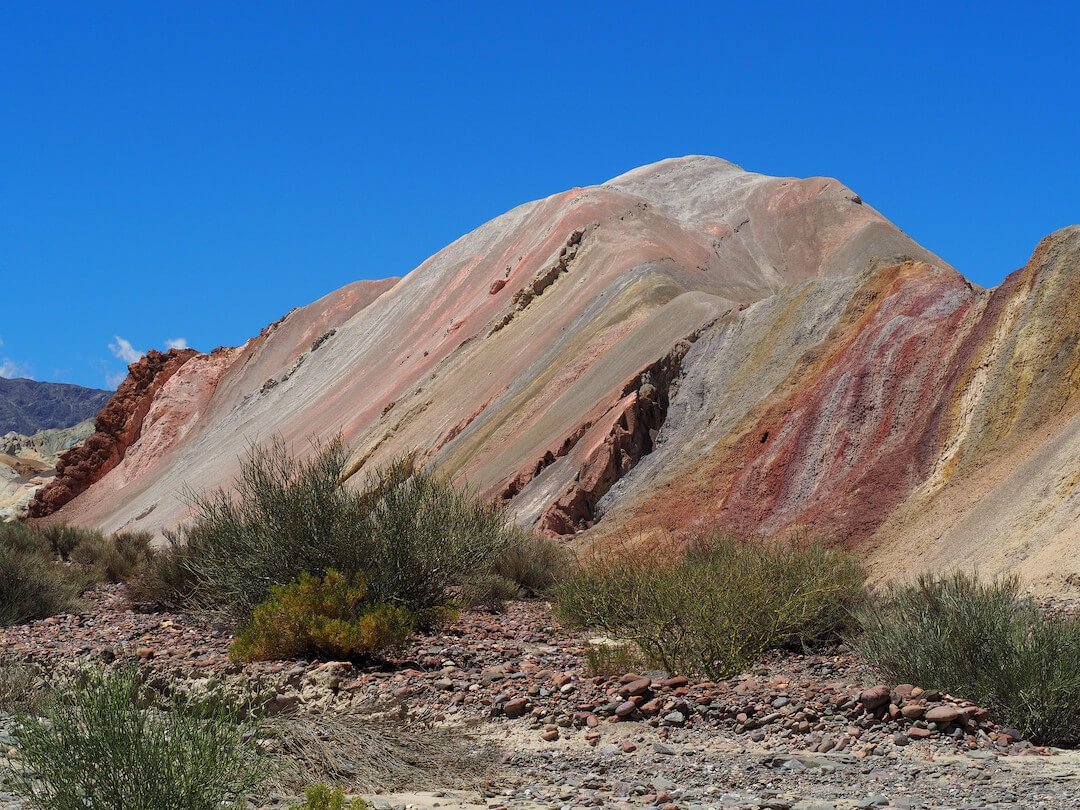
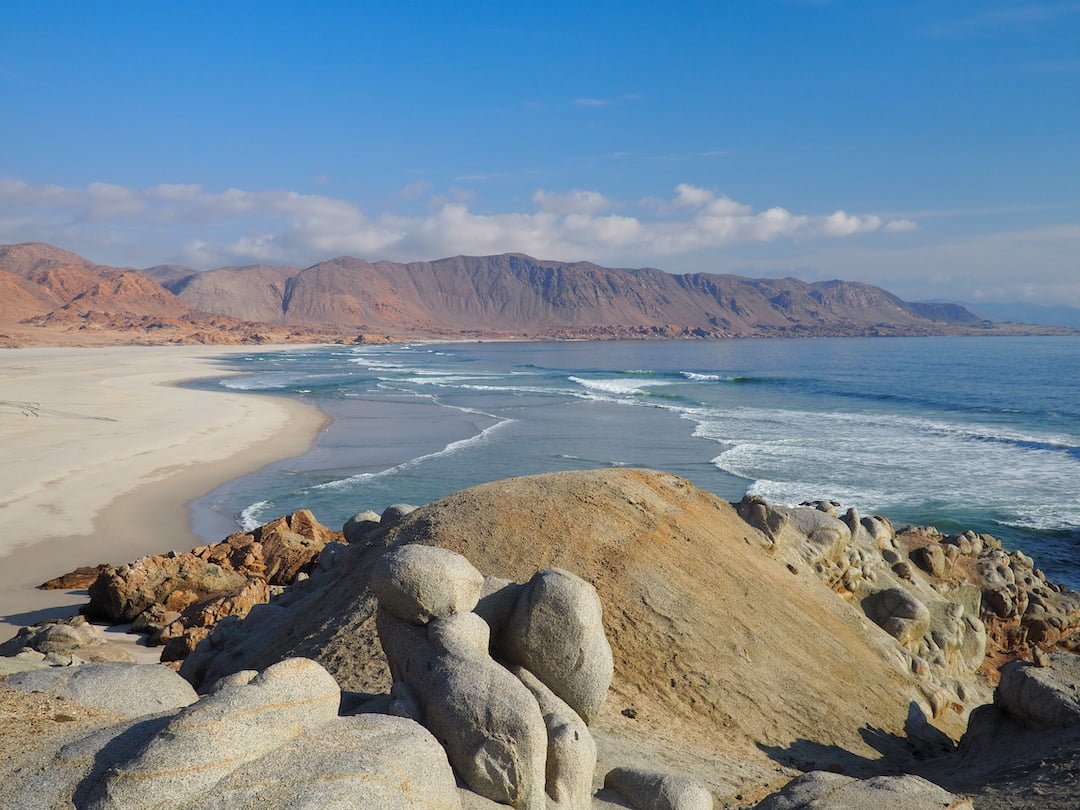
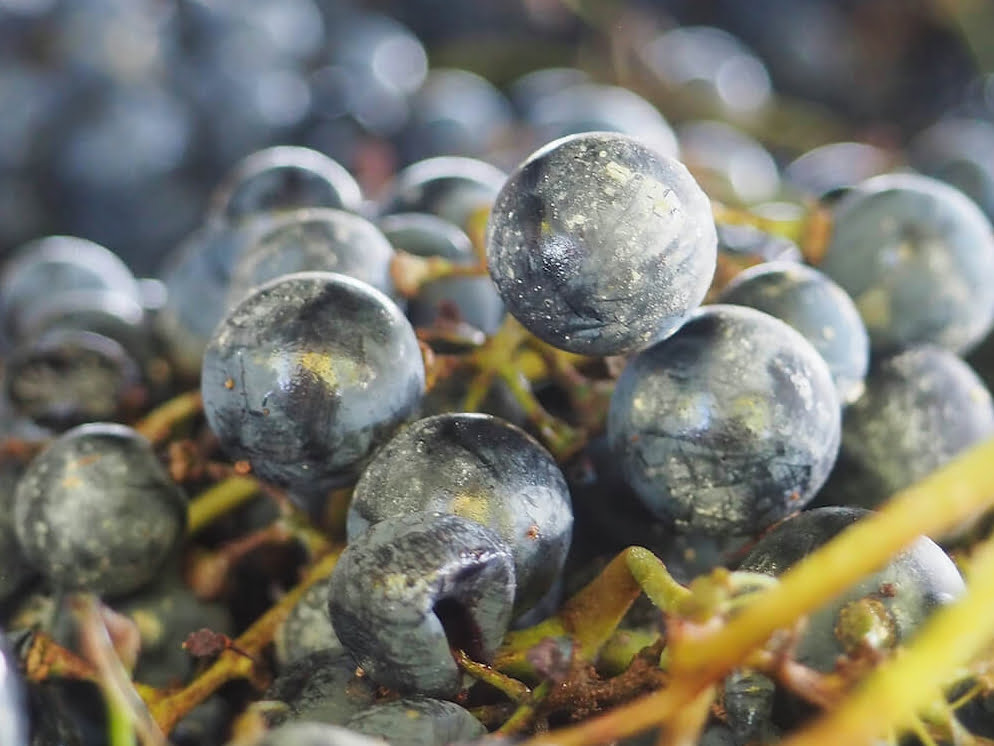
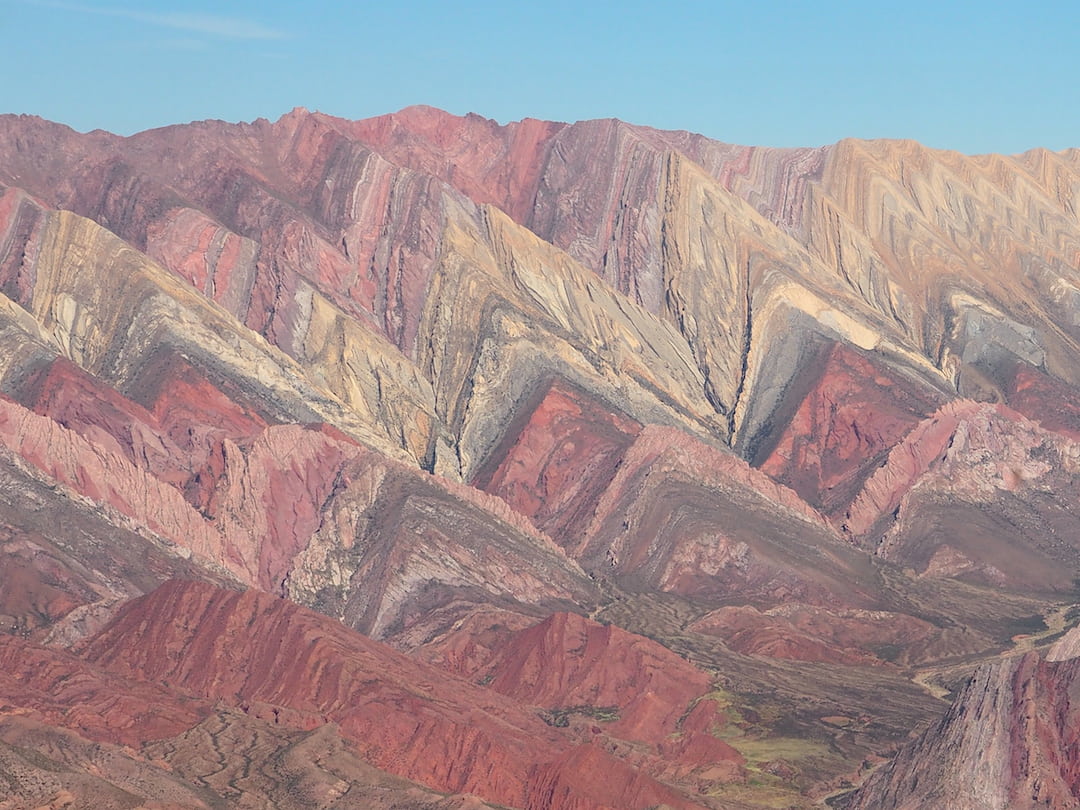
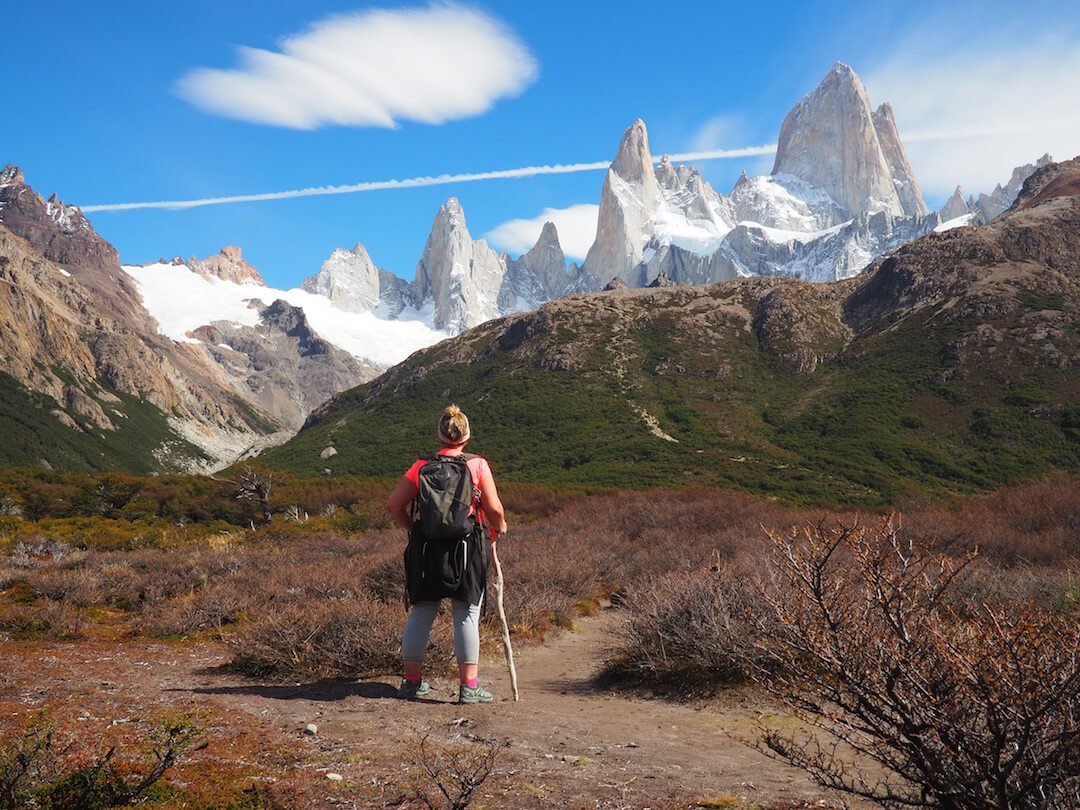
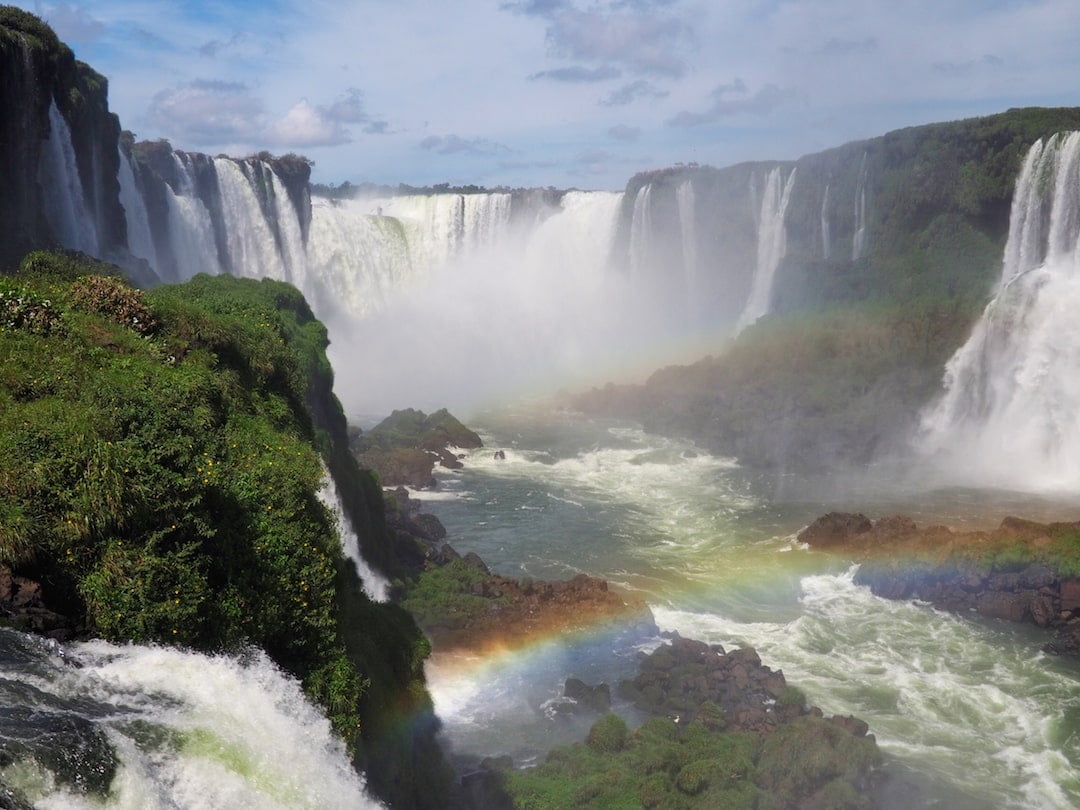

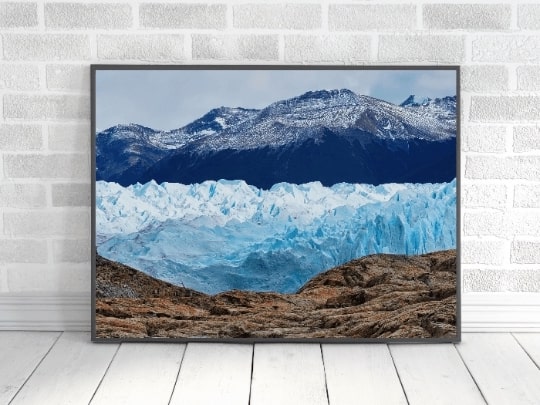
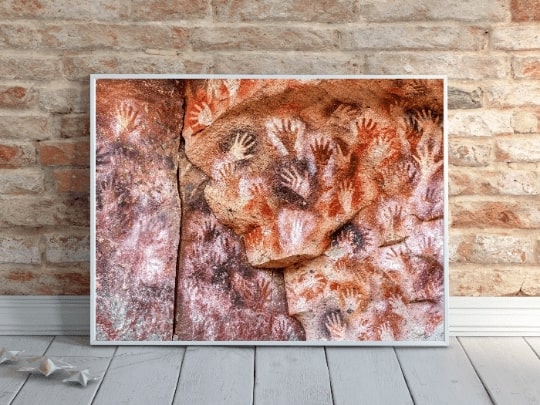
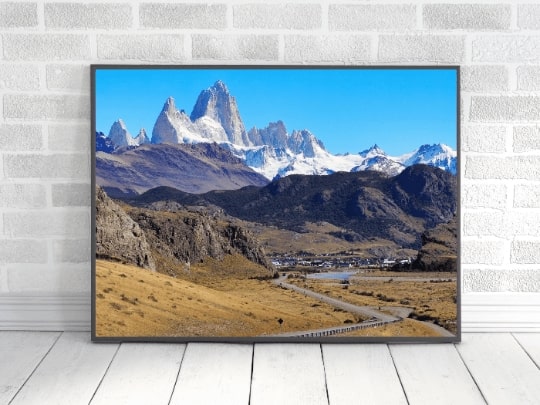
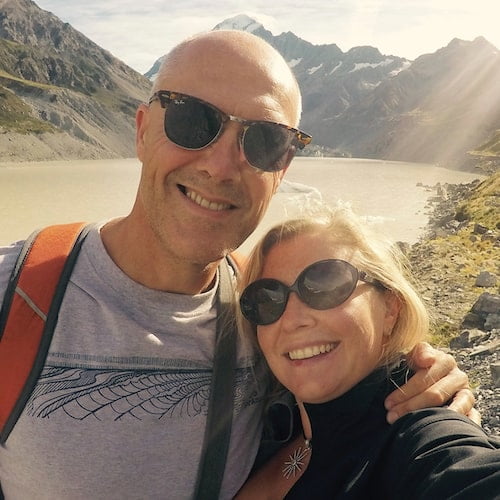
0 Comments